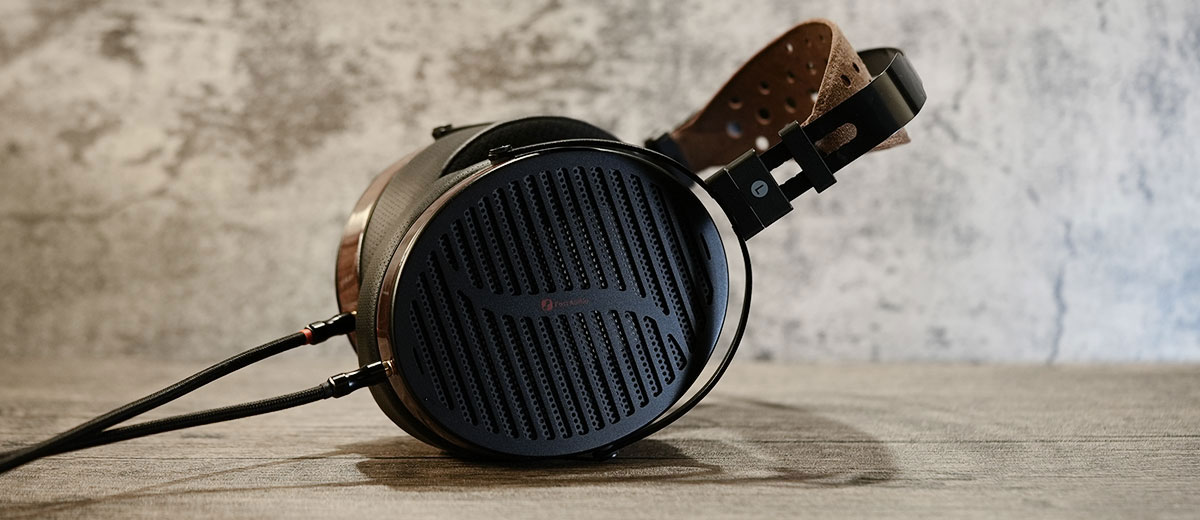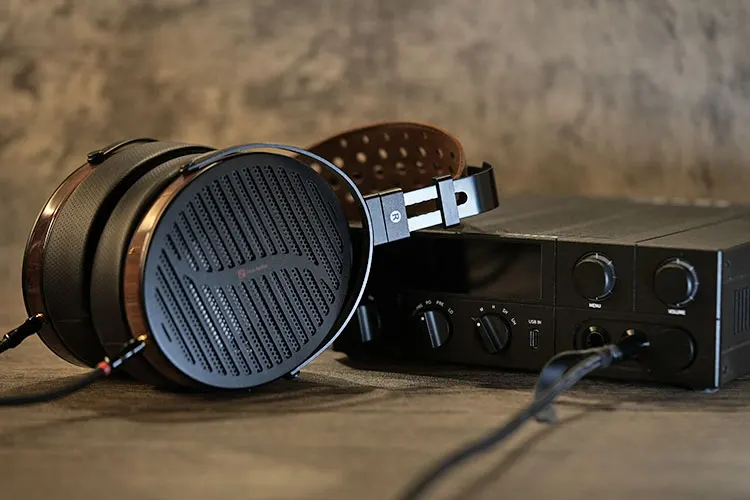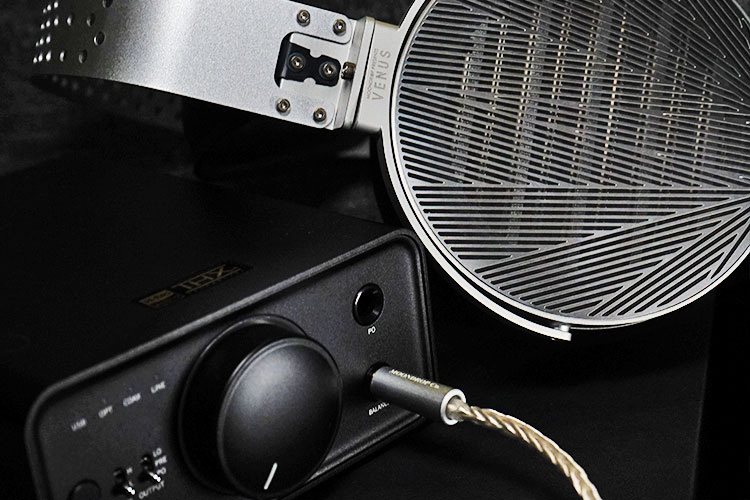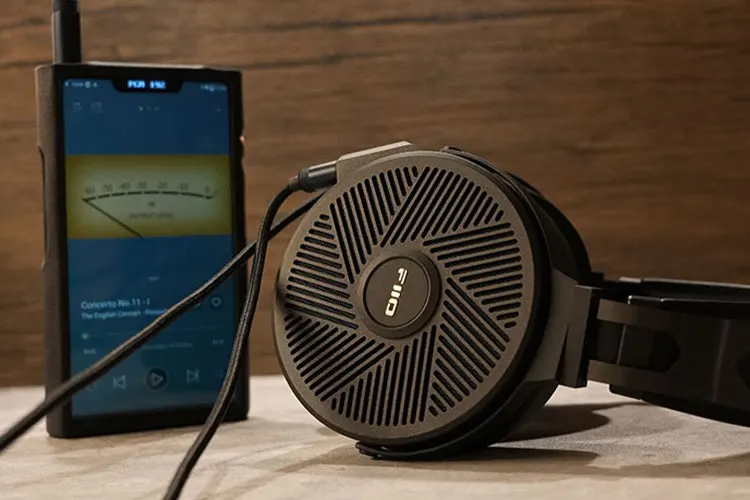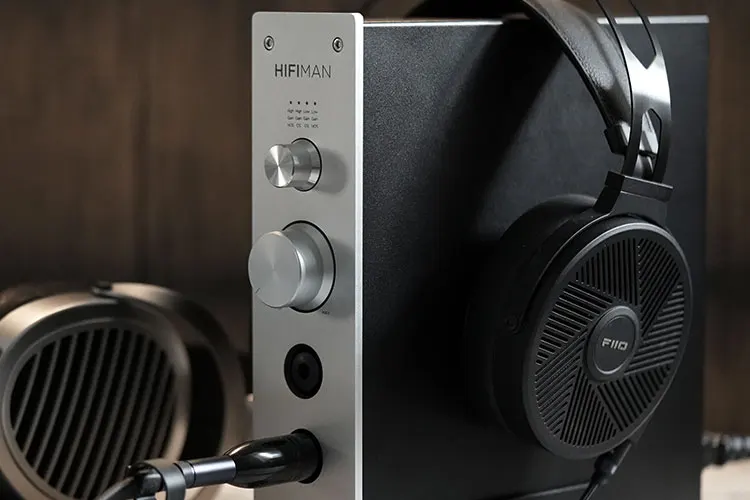Synergy
Efficiency
The Fosi i5 can easily get loud, but you would require an output with good control and power.
When tested with a higher gain level, the i5 will punch with better agility and firmness. Fast drumming sounds more resolving and layered with clearer attacks, though voices can sound more aggressive.
For desktop amplifiers, I would prefer switching to medium to low gain levels to achieve a better balance between dynamics and natural presentation.
Pairings
The i5 is quite responsive to power, and with amplifiers that could deliver stronger swings and current, the bass sounds cleaner, and a better balance is achieved.
Paired with the Shanling M8T yields an enjoyable result with the midrange frequencies sounding detailed and full, and also nicely defined in the bass.
The RME ADI-2 Pro is a better pairing, sounding more refined in the treble with a soft and warm presentation, yet at the same time, detailed and fast in the bass.
When putting it on more powerful amplifiers like the FiiO K19, the bass attacks firmer with a cleaner decay, and the separation of the vocal from the backing is enhanced. However, the vocals may sound quite forward and a bit analytical, especially with high gain.
A warmer amplifier, such as the FiiO K17, can help add more body and a natural tone to the vocals to match the penetrating power in the treble.
On medium gain, it sounds quite expansive. The balance is better than the more analytical K19 and is favorable for listening to J-pop and R&B with male vocals, as well as other streamed content.
In short, you may need to pay some attention to pairing gears for the i5, as it may sound slightly brittle with gears that stress on vocal clarity, especially at higher gain.
When paired with a more neutral and slightly warmish-sounding output, such as the Shanling M8T mentioned or the K17 I have tested, which authorizes the voices with more body and added warmth. With good treble transparency, it yields a more expansive and euphonic result.
One common issue on all i5 pairings, which can be fixed with simple EQ tweaks, is the high pitch “Ts” consonant and sibilance around 6 kHz. Pressing down on the i5 frequencies between 4- 8 kHz will make the vocal more sibilance-free and sweeter-sounding.
Select Comparisons
MOONDROP Venus
Technical
It has been more than 2 years since the Venus was released, and this headphone with 2 microns thick, 100mm planar driver rated 18Ω in impedance and 100 dB/Vrms @1kHz sensitivity is still loved by the community.
In actual testing, the Venus is less sensitive than the i5 and can be more efficiently driven by portable gears like the Shanling M5 Ultra.
There are 18 magnets on the Venus compared to 22 on each side of i5’s planar driver, though they both have a similar pure silver etched circuitry imprinted on the membrane.
Design
Like the Fosi i5, the Venus also has a metallic framework. I think the i5 has a more premium build and finishing, also thicker ear-pads that are more comfortable. The artistic and industrial design of the Venus is still iconic, and with thicker metal parts, it feels more rugged.
In terms of comfort, the i5 is the winner for longer listening sessions here, and I generally prefer the fit on oval-shaped headphones to classic circular circumaural designs, especially with eyewear on.
Performance
Compared to the i5, the Venus feels more power hungry and needs more power to achieve good control of its driver. When tested with less powerful sources, the i5 delivers a meatier, fatter, more defined low-end performance, whereas the Venus is less focused in the midrange, thus sounding more relaxing and smooth.
Testing with the K17, the Venus is more extended on the two ends and relaxed in vocal delivery, as in not pushing the upper vocal range as much and allowing more details and air in the treble to be revealed.
It is also more controlled and precisely damped in sibilance zones, though you can still hear a faint resonant spike on instruments that goes higher up the top.
The i5 is more contrasty and fuller, fun in tone, with a more rounded, sharper roll-off, putting the focus more on the vocal and bass. When it comes to lighter, hoarse or breathy voices, the Venus sounds smoother and free from sibilance, while the i5 gives a more unaltered presentation.
For bass delivery, the Venus is quite a lot smoother and not as elevated as on the i5. The i5 feels more efficient, sounding more dynamic and fuller in the bass, even with less powerful devices, and kicks with more power.
While the Venus sounds more extended, cleaner, it is not as full and powerfully attacking, and it requires more powerful amping and a warmer source to sound as firm and engaging in the low end, if not, the treble may sound harsher.
The vocal on the Venus is more sibilance-free and extended, and only sharper instruments get hot in the treble. The i5 is more engaging for vocal works after equalization, due to its stronger bite and fullness.
FiiO FT5
Technical
The FiiO FT5 features a 90mm driver with N52 magnets, where 11 magnets are placed on the inner side and 9 are on the outer side. It is rated at 36Ω in impedance and 110 dB/Vrms (@1kHz) or 96 dB/mW (@1kHz) for sensitivity, and is less sensitive than the i5.
Design
The FT5 features a professional, full metallic build and comes with a more techy design with more faceted turns and cool grill-type openings on the front panel. The i5 looks more classy with the wood, creating a more organic look.
The FT5 has a recessed cable socket, which makes cable rolling a bit tricky, as some upgrade cables simply can’t fit into the openings. The cabling on the i5 is more straightforward in allowing you to swap it out easily with other aftermarket cables.
Performance
I compared the i5 with the FiiO FT5 using the protein pads, which I prefer for their swifter extension.
Similar to the Venus, the FT5 is capable of extending higher and delivers more energized treble harmonics and clarity. Comparatively, the i5 sounds more powerful in the mid-bass and smoother in the mids, yet the peak and roll-off on the two ends are more obvious.
Further testing with pop and rock streaming on my MacBook via a USB connection to the K17, the FT5 does not emphasize the bass as much as on the i5 and maintains good agility and resolution.
While the FT5 may sound colder, it is actually more dynamic sounding when more instruments come into the mix, and the bass is slightly deeper-sounding. The i5 puts more stress on the guitars and vocalist, and brings out more details in the vocal body.
With brass and violins, the i5 attacks more aggressively with stronger texture and power, while the FT5 is more effortless and smoother in delivery, airily retaining good harmonics and suppressing sibilance well.
The performance with Suede pads on the FT5 comes closer in tuning to the i5, and I find the i5 sounding slightly more organic and natural, though it is less extended in the lows.
One other observation is that the FT5 can scale better with stronger swings without sounding too aggressive or forward in the upper vocal frequencies compared to the i5, which has a stronger, more vibrant character.
My Verdict
As their first headphone release, Fosi did a good job with the i5 planar headphones, putting together a non-fatiguing, engaging tuning on a comfortably fitting framework.
The high sensitivity allows easy pairing even on portable DAPs that have sufficient current output and swing with enough room for the i5 to scale with more powerful amping.
If you are happy to do a little bit of equalizing tweaks and earpad swapping to correct the peaks, then the vocal experience would be even sweeter.
Overall, the Fosi Audio i5 open-back planar headphones are a strong contender for those who want a good technical performance with a warm tuning and don’t want to spend too much on amplification.
Fosi Audio i5 Technical Specifications
- Driver: 97mm Planar magnetic
- Impedance: 28Ω
- Sensitivity: 98dB/mW @ 1 kHz
- Maximum SPL: >120 dB SPL
- Frequency Response range: 10Hz-50kHz
- THD performance: < 1% @ 100 dB SPL
- Weight: 550g

